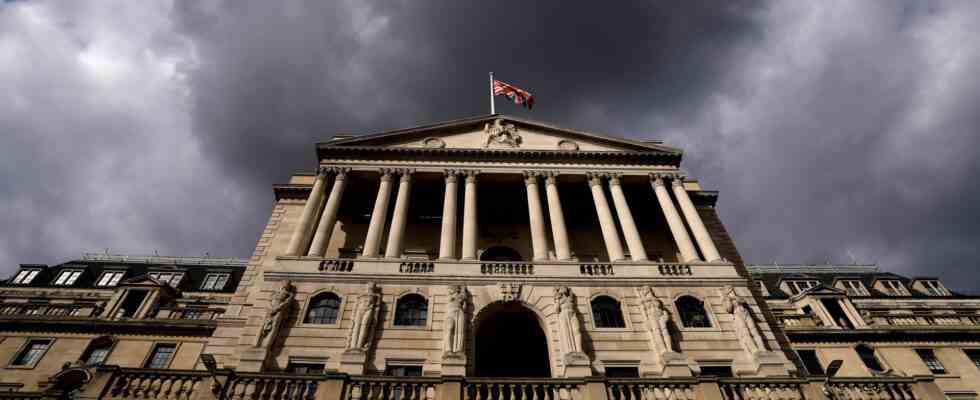Status: 15.12.2022 2:31 p.m
Not only the ECB and the Fed are forced to raise interest rates in the fight against inflation. The central bankers are also reacting to the prevailing inflationary pressure in Switzerland, Norway and Great Britain.
The central banks are trying to counteract the persistent inflation in Europe today with a whole series of interest rate hikes. For example, the Swiss National Bank (SNB) increased interest rates for the third time in a row. The SNB raised the key interest rate by 0.5 percentage points to 1.0 percent. It is the highest level since the global financial crisis in 2008.
The rate of inflation in Switzerland, at three percent in November, is still relatively moderate by international comparison. Nevertheless, the Swiss central bankers are already holding out the prospect of further increases for those involved in the financial markets: “Inflation has fallen somewhat since August,” said SNB President Thomas Jordan. “Although this development is encouraging, it is too early to give the all-clear.”
Interest rate differential must not be too large
According to Jordan, the underlying inflationary pressure has continued to increase, among other things due to high inflation abroad, and there is a risk that inflation in Switzerland will remain high in the medium term due to second-round effects. “It cannot be ruled out that further interest rate hikes will be necessary to ensure price stability,” said the central banker.
Although both the euro zone and the USA have a significantly higher level of inflation, the SNB must also be careful not to let the interest rate differential become too large in nominal terms. “The danger is that the franc will weaken and inflation rates could rise as a result,” comments Thomas Gitzel, chief economist at VP Bank.
Rate hike in Norway
The Norwegian central bank also braced itself against the high inflation in the country with another rate hike. The monetary authorities in Oslo increased the key monetary policy rate from 2.50 to 2.75 percent. As in Switzerland, the central bankers signaled that further increases in the key interest rate are to be expected.
“The forecasts for the Norwegian economy are more uncertain than usual, but if the economy develops as expected, the key interest rate will be around three percent next year,” said central bank governor Ida Wolden Bache. Last year, the Norwegian central bank was one of the first major central banks to respond to high inflation by raising interest rates.
Core inflation, which excludes energy prices and taxes, beat the central bank’s September forecast. It reached 5.9 percent in October and slowed only slightly to 5.7 percent in November. The central bank had only expected five percent for both months and is aiming for core inflation of 2.0 percent in the long term.
The Bank of England’s dilemma
The key interest rate in Great Britain is now at its highest level since 2008. The Bank of England tightened it for the ninth time in a row by 0.5 percentage points to 3.5 percent.
Like other central banks, the Bank of England is increasingly finding itself in a dilemma: On the one hand, it wants to use its tighter monetary policy to combat the high inflation of 10.7 percent recently. On the other hand, the British economy is in trouble because of the consequences of the Ukraine war. As a result, the tightening course could lead to the central bank choking off economic growth.
ECB and Fed each increase by 0.5 percent
As expected, the US Federal Reserve had already raised interest rates by 0.5 percent yesterday. However, the market players were dissatisfied that the statements by the currency watchdogs indicated that further interest rate hikes could be expected. In addition, statements by Fed Chairman Powell diminished investors’ hopes that the Fed could cut interest rates again as early as 2023.
The European Central Bank (ECB) also raised the key interest rate today by 0.5 percent to 2.50 percent.

